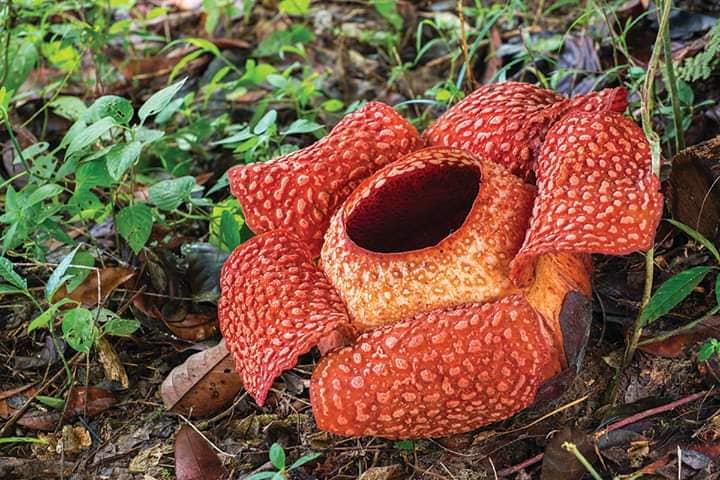
JELI, April 8 (Bernama) — Kelantan, known for its rich diversity of Rafflesia species, is facing serious challenges in conserving the world’s largest flower due to unchecked agricultural development and a general lack of public awareness about conservation.
Dean of the Faculty of Earth Sciences at Universiti Malaysia Kelantan (UMK), Associate Professor Dr Zulhazman Hamzah, said uncontrolled development in Rafflesia’s natural habitat could threaten the survival of the world’s largest flower species.
“Areas like Lojing, which were once thriving with Rafflesia populations, are now under serious threat due to large-scale agricultural development,” he told Bernama in a recent interview.
According to him, 26 Rafflesia populations have been identified in Lojing, making it all the more critical to protect the area’s fragile ecosystem.
“If this trend continues without strict regulatory control, we may lose one of the country’s most precious natural treasures,” he warned.
He said there are about 40 species of Rafflesia found worldwide, all of which are native to just five Southeast Asian countries, namely Malaysia, Indonesia, the Philippines, Thailand, and Brunei.
“Malaysia alone is home to 14 species, with eight of them found in the peninsula and six in Sabah and Sarawak,” he said.
However, inadequate monitoring and the lack of seriousness from certain quarters regarding conservation have contributed to threats facing the species.
“Public awareness remains low, which often leads to conservation efforts being overlooked or undervalued,” he added.
Rafflesia conservation efforts in Kelantan began in 2008 through the Lojing Scientific Expedition, which brought together over 100 participants from various universities and government agencies.
In 2010, he said, an area covering 404.6 hectares in Lojing was gazetted as a Rafflesia Conservation Area and since then, various studies have been conducted, including on the growth, pollination and dispersal of seeds.
However, he noted that conservation efforts are becoming increasingly difficult due to the expansion of agricultural activities in areas near the flower’s natural habitat.
“In light of this, there is a pressing need for tighter control over activities that may impact the Rafflesia ecosystem,” he said and proposed measures like limiting development near conservation zones and enforcing stricter regulations on agricultural and tourism-related activities.
He also recommended involving the Orang Asli community in conservation efforts and implementing ongoing awareness campaigns targeting both local communities and tourists.
“If these measures are not taken immediately, the Rafflesia habitat will continue to be threatened and we may lose this species in the next few decades,” he said.
Kelantan is one of the states with the greatest diversity of Rafflesia species, with three main types found in the region, namely the Rafflesia kerrii, Rafflesia cantleyi and Rafflesia sumii.
According to Zulhazman, the unique presence of these species positions Kelantan as a promising hub for Rafflesia conservation and scientific research in Malaysia.
“With stronger collaboration between the state government and relevant stakeholders in implementing conservation strategies, Kelantan has the potential to become an internationally recognised centre for ecological research and nature-based tourism,” he said.
However, Zulhazman cautioned that without more effective control measures, current conservation efforts may fall short of ensuring the long-term survival of the iconic giant flower.
— BERNAMA